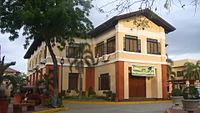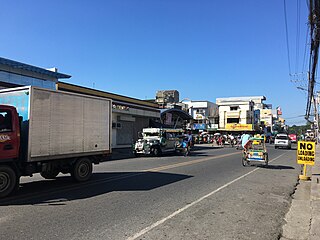
Mangaldan, officially the Municipality of Mangaldan, is a 1st class municipality in the province of Pangasinan, Philippines. According to the 2020 census, it has a population of 113,185 people.

Anda, officially the Municipality of Anda, is a 3rd class municipality in the province of Pangasinan, Philippines. Unique in this part of the province, The Sambalic language of Bolinao or Binubolinao is primarily spoken in the municipality and the adjacent town of Bolinao. According to the 2020 census, it has a population of 41,548 people.

Sison, officially the Municipality of Sison, is a 3rd class municipality in the province of Pangasinan, Philippines. The town's original name was Alava. According to the 2020 census, it has a population of 52,320 people.
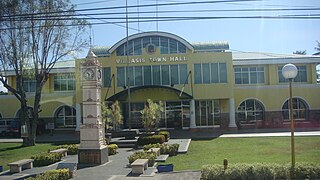
Villasis, officially the Municipality of Villasis, is a 1st class municipality in the province of Pangasinan, Philippines. According to the 2020 census, it has a population of 65,047 people.

Santo Tomas, officially the Municipality of Santo Tomas, is a 4th class municipality in the province of La Union, Philippines. According to the 2020 census, it has a population of 40,846 people.

Agno, officially the Municipality of Agno, is a 3rd class municipality in the province of Pangasinan, Philippines. According to the 2020 census, it has a population of 29,947 people.

Asingan, officially the Municipality of Asingan, is a 2nd class municipality in the province of Pangasinan, Philippines. According to the 2020 census, it has a population of 57,811 people.

Bani, officially the Municipality of Bani, is a 2nd class municipality in the province of Pangasinan, Philippines. According to the 2020 census, it has a population of 52,603 people.

Basista, officially the Municipality of Basista, is a 4th class municipality in the province of Pangasinan, Philippines. According to the 2020 census, it has a population of 37,679 people.

Bautista, officially the Municipality of Bautista, is a 4th class municipality in the province of Pangasinan, Philippines. According to the 2020 census, it has a population of 35,398 people.

Calasiao, officially the Municipality of Calasiao, is a 1st class municipality in the province of Pangasinan, Philippines. According to the 2020 census, it has a population of 100,471 people.

Labrador, officially the Municipality of Labrador, is a 4th class municipality in the province of Pangasinan, Philippines. According to the 2020 census, it has a population of 26,811 people.

Laoac, officially the Municipality of Laoac, is a 4th class municipality in the province of Pangasinan, Philippines. According to the 2020 census, it has a population of 34,128 people.

Mapandan, officially the Municipality of Mapandan, is a 3rd class municipality in the province of Pangasinan, Philippines. According to the 2020 census, it has a population of 38,058 people.
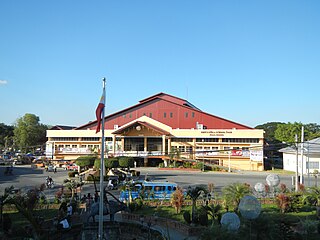
Rosales, officially the Municipality of Rosales, is a 1st class municipality in the province of Pangasinan, Philippines. According to the 2020 census, it has a population of 66,711 people.
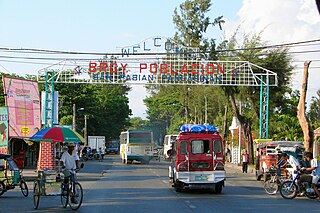
San Fabian, officially the Municipality of San Fabian, is a 1st class municipality in the province of Pangasinan, Philippines. According to the 2020 census, it has a population of 87,428 people.

San Jacinto, officially the Municipality of San Jacinto, is a 2nd class municipality in the province of Pangasinan, Philippines. According to the 2020 census, it has a population of 134,351 people.

Santa Barbara, officially the Municipality of Santa Barbara, is a 1st class municipality in the province of Pangasinan, Philippines. According to the 2020 census, it has a population of 92,187 people.

Sual, officially the Municipality of Sual, is a 1st class municipality in the province of Pangasinan, Philippines. According to the 2020 census, it has a population of 39,091 people.

Umingan, officially the Municipality of Umingan, is a 1st class municipality in the province of Pangasinan, Philippines. According to the 2020 census, it has a population of 77,074 people.








